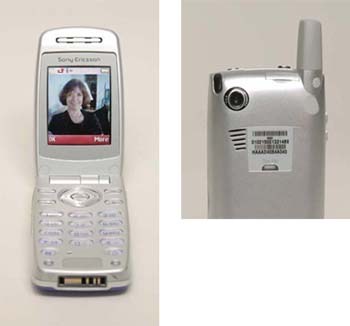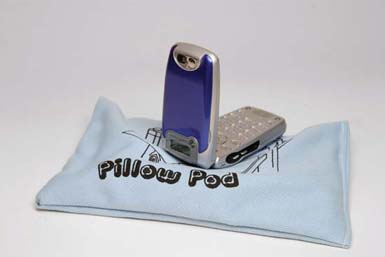3.19. Cameraphone Photography There's an old photographer's saying: the best camera is the one you have with you. The day you're faced with a photo op and your multi-megapixel wonder machine is stashed in your sock drawer at home, you'll be thankful if there's a cameraphone in your pocket ”a cellphone with a tiny, built-in lens that takes tiny, built-in pictures. Of course, cameraphones don't have all of the whiz-bang settings that you've come to adore on your digicam, but you can still take perfectly good shots (see Figure 3-19). Here's a look at the most common cameraphone settings and how they can help you take better pictures. -
Picture size . This option gives you the choice between two resolution settings: large and small. (They would be more accurately labeled small and smaller, but that wouldn't fly with the marketing department.) Choose large, which is usually about 640 x 480 pixels. You can't make a very big print with these images, but they're handy for emailing. -
Night mode. Since most cameraphones don't have flashes, manufacturers had to figure out a way to let you take pictures indoors. What they came up with is night mode. Ironically, this setting doesn't work very well in darkness . But in typical indoor light, night mode is pretty good. Turn it on for all indoor photography or whenever the light is less than full sunshine. -
Effects. You may get a menu of oddball settings called effects. Here you can change from normal color photography to things like sepia, black and white, or even negative, which is perfect for that X-ray look you've been yearning for. Generally speaking, don't bother with the options in this menu; shoot your pictures in living color . You can always add an effect later in iPhoto ”with much greater control. -
Default name . This setting, if you have it, is actually pretty handy. Instead of catchy file names like IMG_3091.jpg, you can instruct your camera to use something more friendly, such as Greece Vac 001. Just remember to change the setting once you return home, or your friends might wonder why that shot of the Golden Gate Bridge is called Greece Vac 765. -
Self-timer. Often considered the best way to include the photographer in family group shots, the self-timer is also a great tool for getting sharp pictures in less-than -perfect lighting. Rest the camera on any steady surface, compose the image, activate the self-timer, and press the shutter button. The camera counts for about 10 seconds and then shoots the shot. (As usual, the steadier the camera, the sharper the shot will be.)  | Figure 3-19. Cameraphones are designed for moderately close portraits. Head-and-shoulders compositions usually turn out well. But avoid super-closeups, especially of friends and family. Those wide-angle lenses built into phones (shown at right on a Treo 600) can distort your subject, potentially resulting in estrangement from loved ones. Compose your portraits as shown at left; you'll get the shot and keep your friends.
When all looks well, hold steady and squeeze the shutter button (often the phone's Enter button, shown here on a Sony Ericsson cameraphone). | |
Often, you'll want to use these settings in combination, like using night mode and a self-timer to take crisp indoor photos.
Tip: One problem with cameraphones is that there's no tripod socket. How the heck do you compose your self-timer shots without a tripod? Figure 3-20 shows one option.
 | Figure 3-20. How do you steady a camera that doesn't have a tripod socket? This beanbag chair for mobile phones is the perfect solution. For a mere $6, Porter's Camera Store (www.porterscamerastore.com) will ship you a nifty solution called the Pillow Pod. It's like a beanbag chair for your cameraphone. As simple as it sounds, the Pillow Pod lets you align your phone for just the right composition when using the self-timer. | |
You're probably not going to win any photo contests taking pictures this way. But in a pinch , at least now you know how to squeeze every drop of quality from the one camera you'll always have with you. All that's left is figuring out how to get the pictures into iPhoto; see Chapter 4 for details on that process. |

